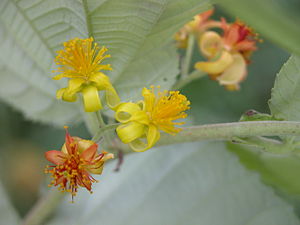Difference between revisions of "Grewia asiatica"
Jump to navigation
Jump to search
m (1 revision: Grewia asiatica) |
(cut down) |
||
| Line 9: | Line 9: | ||
*''Grewia subinaequalis '' <small>DC. </small><ref>http://www.theplantlist.org/tpl/record/kew-2832898</ref> | *''Grewia subinaequalis '' <small>DC. </small><ref>http://www.theplantlist.org/tpl/record/kew-2832898</ref> | ||
}} | }} | ||
| − | |||
| − | |||
| − | |||
| − | |||
| − | |||
| − | |||
| − | |||
| − | |||
| − | |||
| − | |||
| − | |||
==References== | ==References== | ||
{{Reflist}} | {{Reflist}} | ||
| − | + | [[Category:Malvaceae]] | |
| − | + | [[Category:Plants for Keenan to eat]] | |
| − | |||
| − | [[Category: | ||
| − | [[Category:Plants | ||
Latest revision as of 18:37, 15 November 2018
| Grewia asiatica | |
|---|---|

| |
| Flowers and leaves | |
| Scientific classification | |
| Kingdom: | Plantae |
| Clade: | Angiosperms |
| Clade: | Eudicots |
| Clade: | Rosids |
| Order: | Malvales |
| Family: | Malvaceae |
| Genus: | Grewia |
| Species: | G. asiatica
|
| Binomial name | |
| Grewia asiatica | |
| Synonyms | |
| |